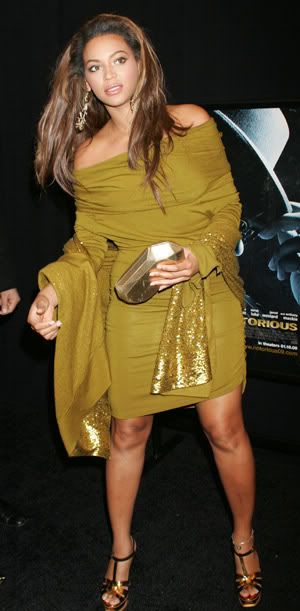 |
extensions and consciously cultivated
body to make it larger and fuller.
I believe blacks in general do this
to distinguish themselves from whites
(Hispanics also do this, as seen by
Jennifer Lopez). Also, body structure
of blacks is different, so it is partly
to accentuate their natural looks.
Current pop culture is awash with mulattas: Beyonce, Rihanna, Alicia Keys, Leona Lewis to name a few. These are women celebrities, often singers, who have at least a parent, a grandparent, or some heritage (Beyonce calls herself Creole) that is white. They, of course, identify themselves as black, but their behavior and creativity is subtly unique. Unlike black pop stars who attract a core black audience, these mulattas seem to be super, even mega, stars for all.
They resemble one another, to the extent that they may be cultivating a movement. They present a body image that is larger and heavier than other white pop stars. They often have long, artificial hair, usually unnatural reds, blondes or browns. The wear overtly sexual clothes, both on and off stage, like all pop stars these days. But in their case, it is taken up a few notches.
When not performing, they are often soft-spoken, feminine, and even demure in public. But on stage, they are aggressive and sexual. In rare moments, their belligerence also comes through in public. Alicia Keys is famous for saying that she wears AK-47 pendent around her neck "to symbolize strength, power and killing 'em [white people] dead." Beyonce is married to rap singer Jay-Z who was once a drug dealer. And Rihanna went through a public “domestic violence” case where further investigation shows that she wasn’t exactly a saint in the relationship.
These women hardly ever sing rap or hip-hop, but they collaborate with other rap and hip-hop stars, usually male. Their choreography is full of inelegant, often sexualized, moves, which is different from rap or hip-hop, but does contain some elements of these dances.
Madonna, Britney, and even the latest wonder Lady Gaga, spend time on intricately designed stage presence, often with difficult and superior choreography. Their songs are also multi-layered compositions – as pop music goes. But, this mulatta group is more interested in presence than substance. Their songs are simplistic and mediocre, although initially catchy, and their choreography inferior. Their aggression is the vehicle that carries them through their performances.
In a way, they are the female version of the male rap and hip-hop stars. There is no name for their “movement” and type of music. Perhaps in a less politically correct world, the Mulatta Madonnas might work. Rihanna did say that she wanted to be the “Black Madonna,” which is a little presumptious considering the uncontested (whether a fan or not) talent of the real Madonna Ciccone.
Other non-whites are joining the mix, at least in song-style, stage presence and aggressiveness. Jennifer Lopez, who presents herself as a Puerto Rican from the Bronx (don’t Puerto Ricans have some black ancestry in their mix?), dresses, behaves and performs very similar to the Beyonces and Rihannas. She also dated black rapper P. Diddy some years back, and was with him at a night club shoot out that got him arrested.
You can watch Jennifer Lopez performing on New Year’s Eve. Her aggressive moves, her hostile expression and her scant clothing, represents much of what the original Mulatta Madonnas are about.
This is the new direction, and the degraded quality, that pop music is taking.
